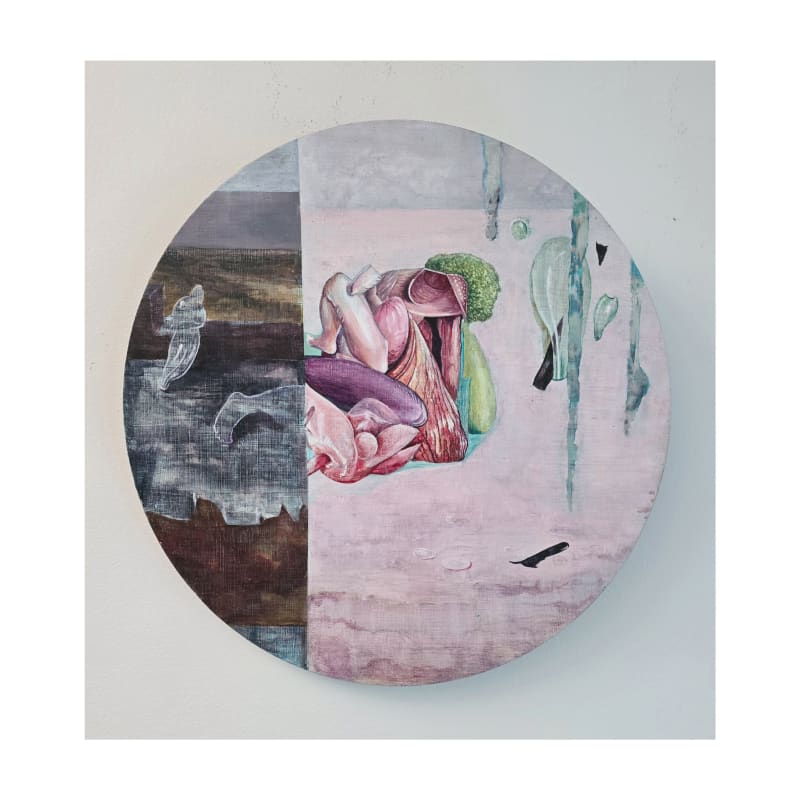The work of Marilou evokes a deep alienation, a sense of elusiveness that attracts us as much as it challenges us.
The theme of her paintings: the fragments that never form a complete whole, the chaotic structures that challenge us to find meaning where there may not be any. Recognizable elements are always present, but at the same time they are captured in a context of alienation and inscrutability. This world is both recognizable and strange, and this tension is what makes her work so intriguing.
“Our eye shifts back and forth and finds no rest anywhere.”
With a slight surrealistic undertone, she paints a reality that constantly escapes us. She explores social and existential phenomena. She paints chaos and man's helpless ways of getting a grip on it. Nowhere is there peace. Perspectives shift and logic is broken. Van Lierop does not guide our gaze. She does not force it. There is no center, no focus, only quiet chaos.
At a time when many strive for clear answers and well-defined meanings, Van Lierop challenges us to get lost. Her paintings refuse to present a coherent narrative. They play on our natural tendency to create order out of chaos, but just when we think we have found a narrative, it slips through our fingers again. This play with fragmentation and the incoherence of the parts versus the whole, invites philosophical reflection: can we ever truly find meaning in the complexity of life, or is the search itself the essence of our experience?
Chaos and human control
A recurring theme in her work is the human attempt to get a grip on chaos. This theme resonates not only in the subjects she chooses, but also in her technique. Her delicate brushstrokes and transparent layers create a dynamic reminiscent of a constantly moving whole, where structures and patterns are only laterally visible. We are shown only fragments of what might exist, never the full picture. This creates a certain degree of helplessness, a sense that in the chaos of the modern world, man is no longer able to exert control.
Her work on convex surfaces, such as the elements from climbing walls, further explores this theme of chaos and control. These surfaces do not provide a neutral base, but disrupt our vision and interpretation. We see diffuse images, balancing between abstraction and representation. These works seem to offer a subtle critique of our need to get a grip on an increasingly complex world. The climbing walls, symbolic of human attempts to climb higher, here seem more like a metaphor for our failure: the higher we climb, the more diffuse our image of reality becomes. Or do we, like Icarus, threaten to get too close to the sun and crash.

